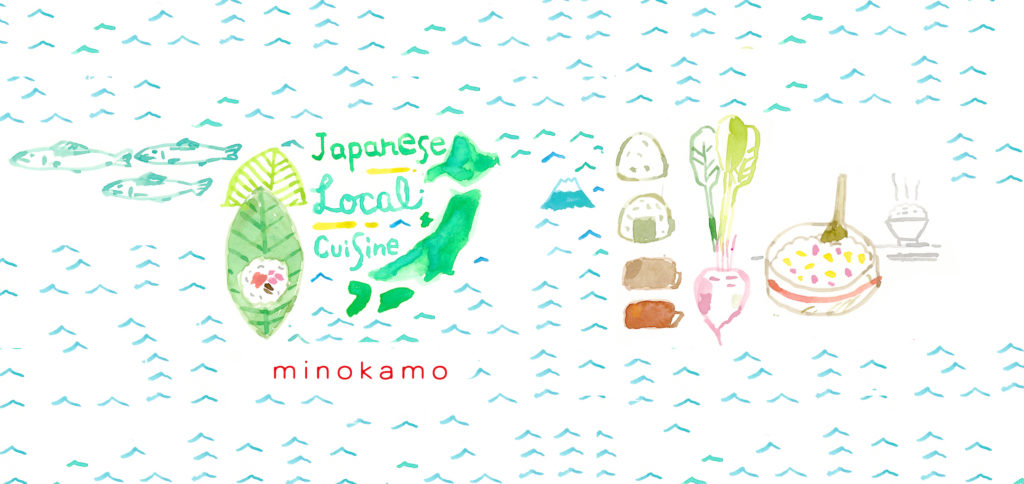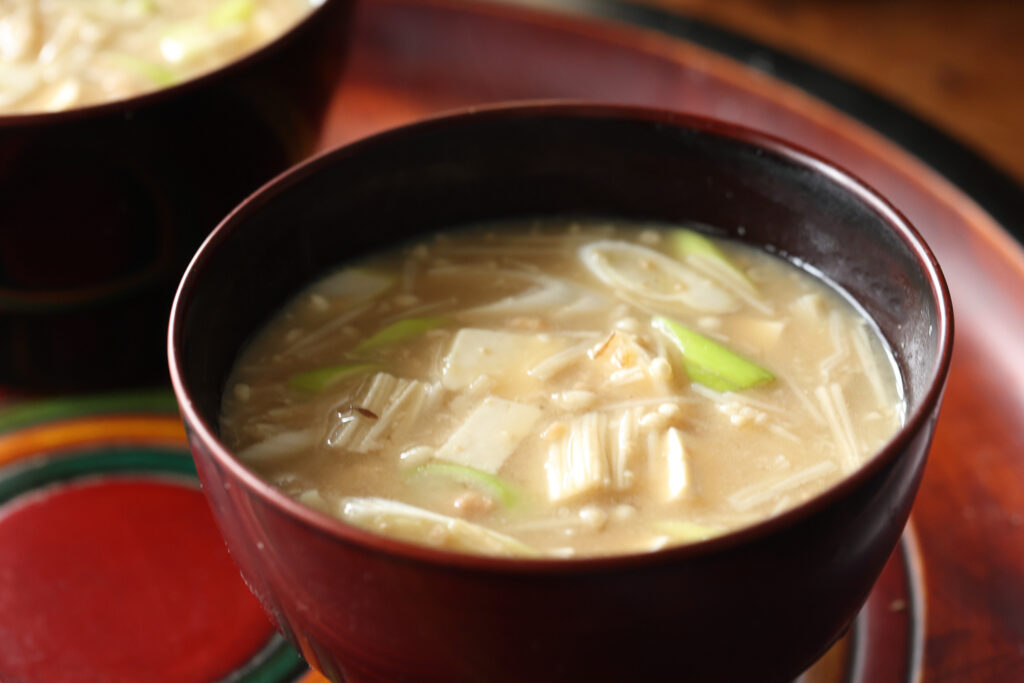
Ingredients (makes 4 bowls)
100 g tsubu natto / whole-bean natto
1/2 block momen tofu / firm tofu
1 pack enoki mushroom (100 g)
1/2 negi / Welsh onion
3 tbsp miso
3 tbsp sake
600 cc dashi
* Any dashi of your choice will work fine for this recipe—shiitake, katsuobushi, or kombu. This time, I made my dashi with 3 g of katsuobushi (bonito flakes).
* Traditionally, the recipe called for imogara, made from the dried stems of Karadori potatoes, plus any salt pickled or dried wild vegetables and mushrooms on hand.

How to make
1. Grind the whole-bean natto in a suribachi (mortar). Add the sake midway and continue grinding until creamy. Finally, thin the paste with about 3 tbsp of dashi.
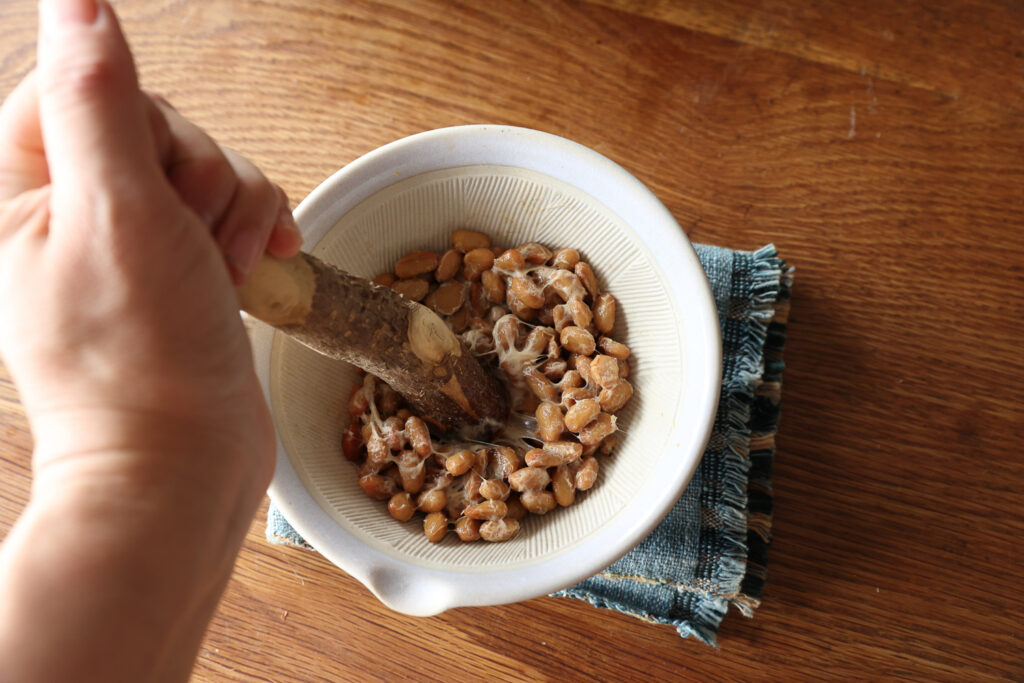
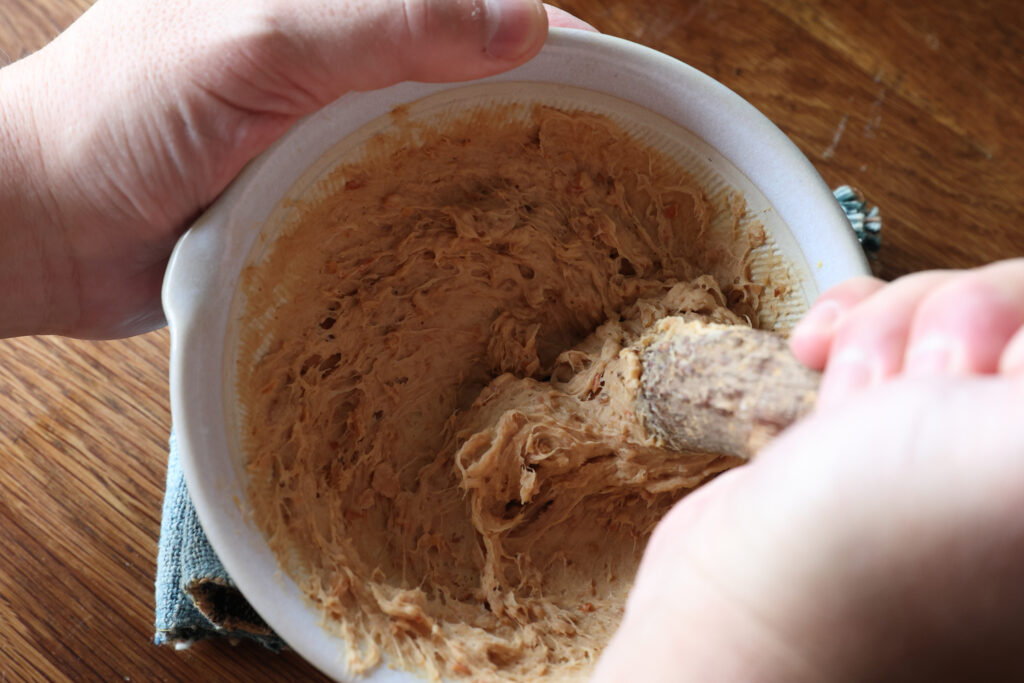
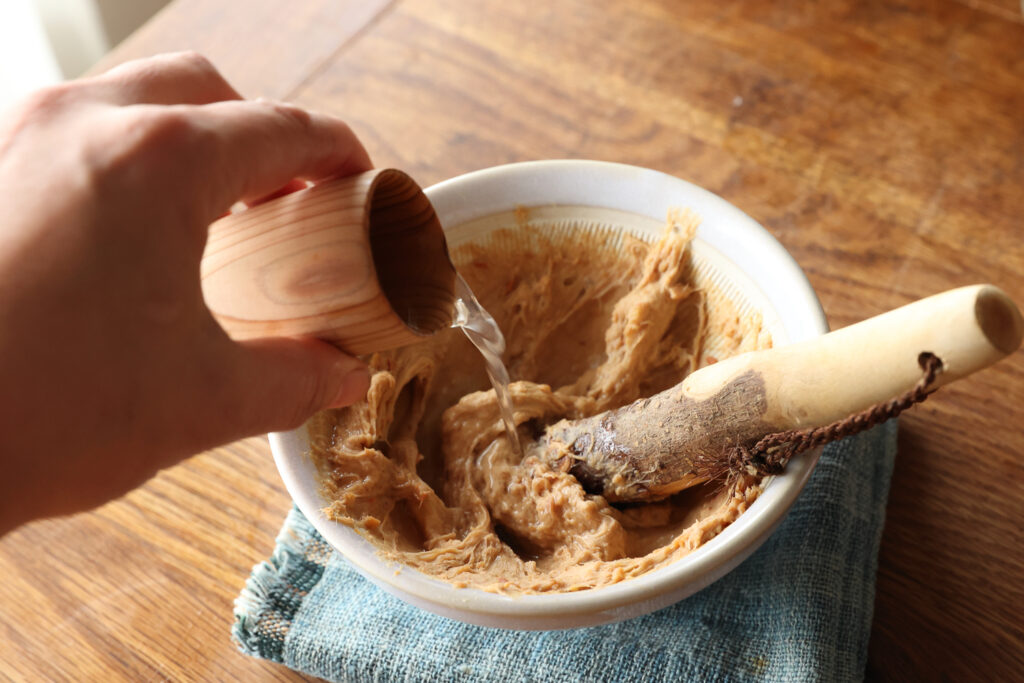
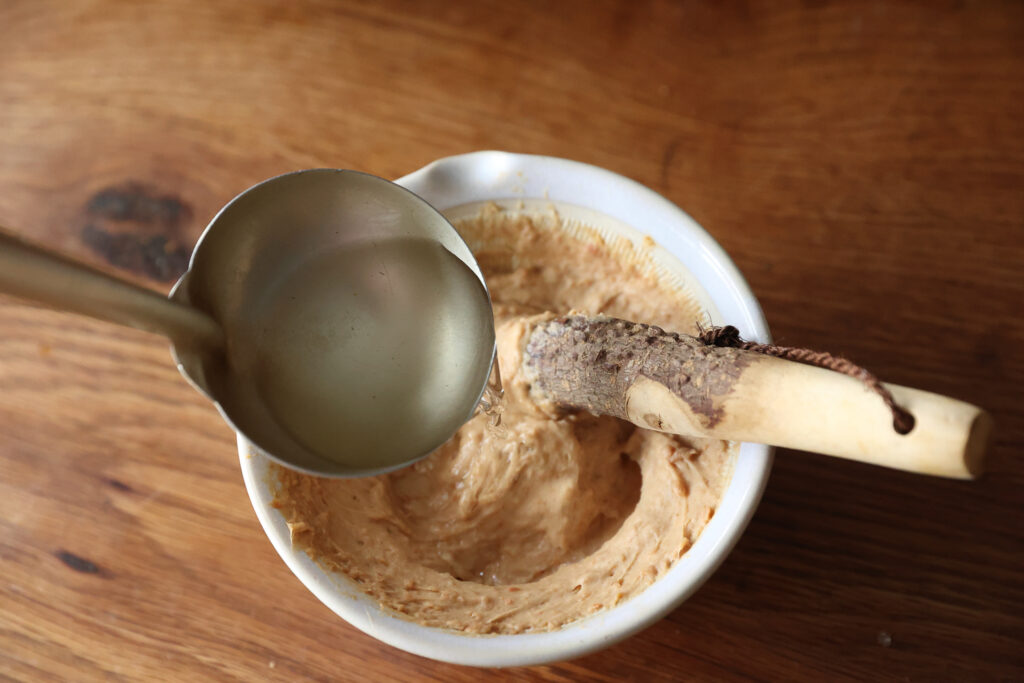
2. Remove the base and cut the enoki mushroom into 3 cm long pieces. Cut the tofu into 3 cm cubes, and the negi into fine diagonal slices.
3. Place the dashi, tofu, and miso in a pot, and dissolve the miso first before turning on the heat. When fine bubbles start to rise, add the enoki, and when bubbly again, blend in the natto (1) and add the negi. Turn off the heat just before the soup comes to a boil. Alternatively, if you’d like to retain the strong aroma and flavor of natto, save (1) for last and blend in just before the soup comes to a boil.
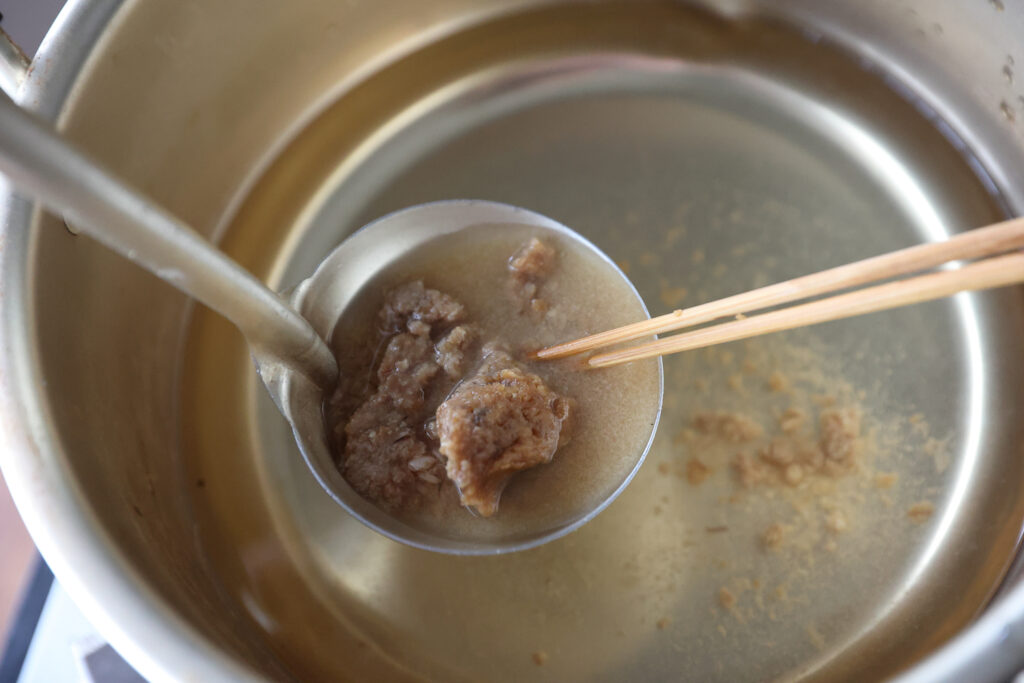
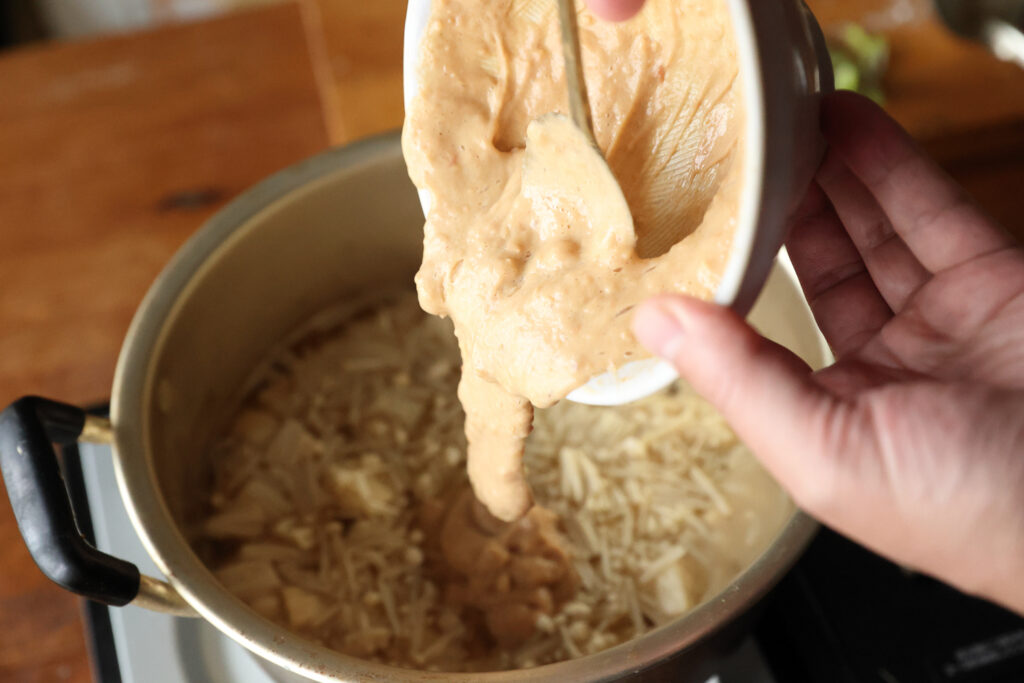
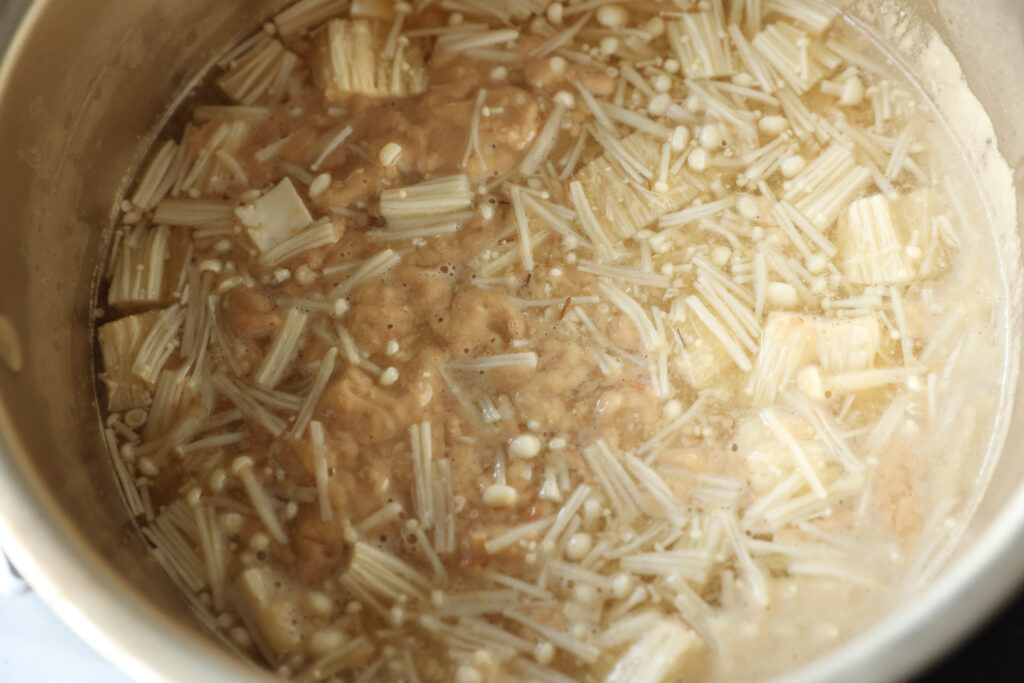
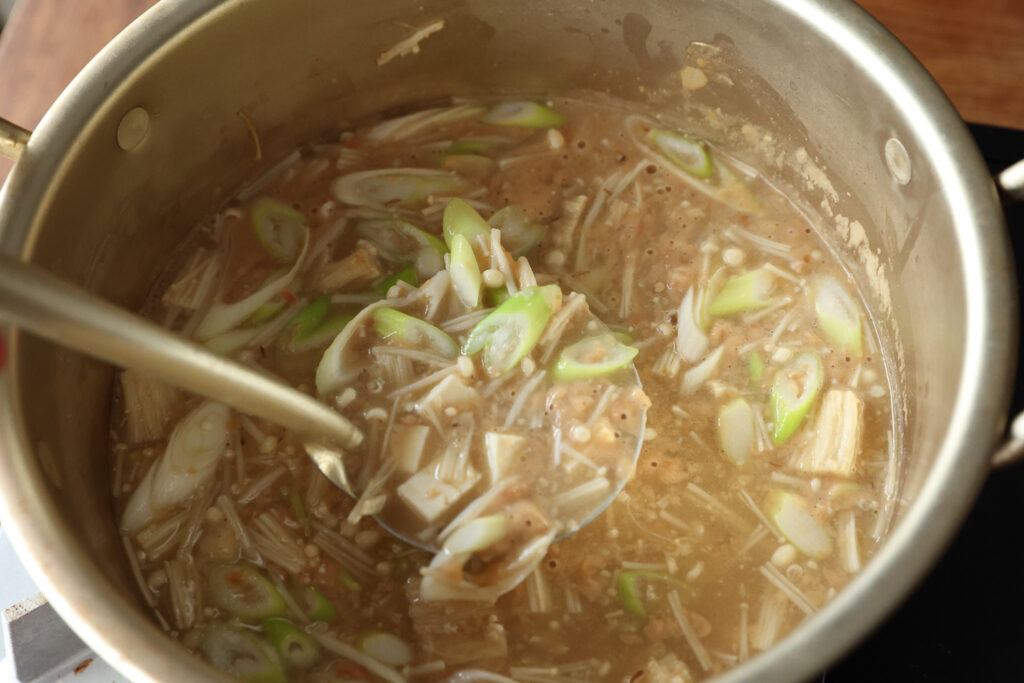
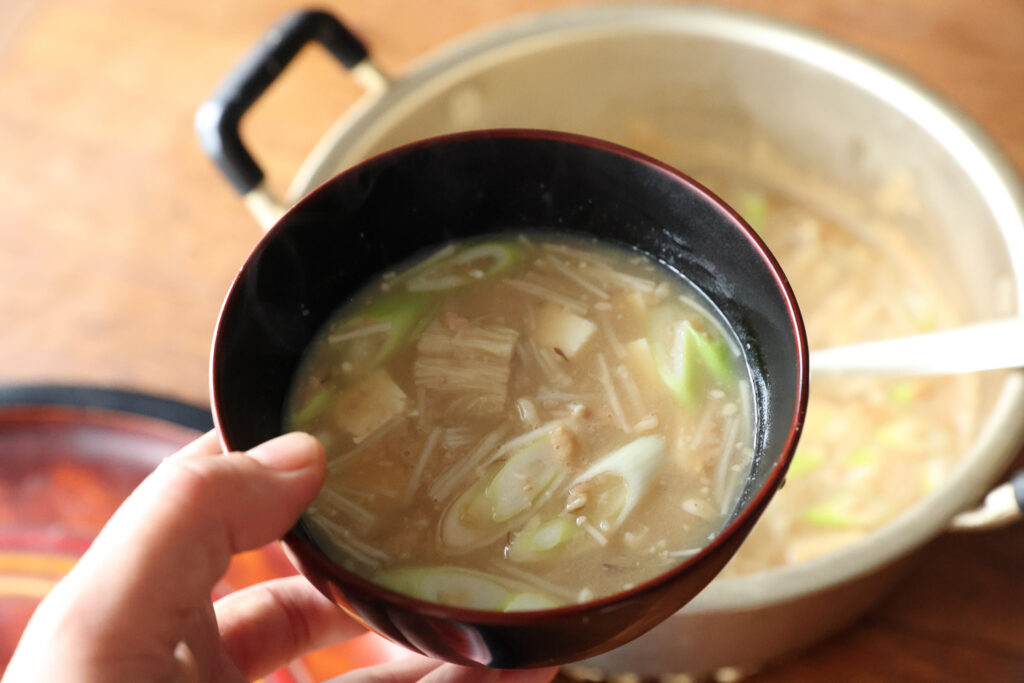
On a trip one winter to Tsuruoka City, Yamagata Prefecture, I was served natto-jiru—natto soup, made with the Japanese delicacy of pungent, sticky fermented soybeans. Finely ground by hand in a suribachi mortar, the natto was flavorsome, and how the creamy soup warmed me up! Natto-jiru is typically enjoyed during the cold months and especially at the end of the year. In the Shonai area, it’s also made on December 9 to celebrate Daikoku-sama no otoshiya. This is a day for celebrating the transition into the New Year with Daikokuten, one of the Seven Lucky Gods, and a day for giving thanks for the past year and praying for good harvest and prosperity for one’s descendants.
Natto-jiru is such a standard winter dish that the combined aroma of natto and miso—both fermented soybean products—drifting from the kitchen gives away the family’s supper menu. Originally, the soup was a valuable source of protein during the chilly season. As I set about grinding the natto in my suribachi, I wondered how much work it’s going to take to mash the beans completely, but a creamy paste formed in no time. Traditionally, another vital ingredient of natto-jiru was imogara, made from the dried stems of Karadori potatoes (a relative of taro root), which is simmered very lightly to retain the chewy texture. This time, I used enoki mushroom instead, for a different but just as pleasant chewy accent, in the interest of keeping the ingredients simple and easy to find. Picture life in the snowy winter of Yamagata, and enjoy your bowl of natto-jiru. Bon appétit!
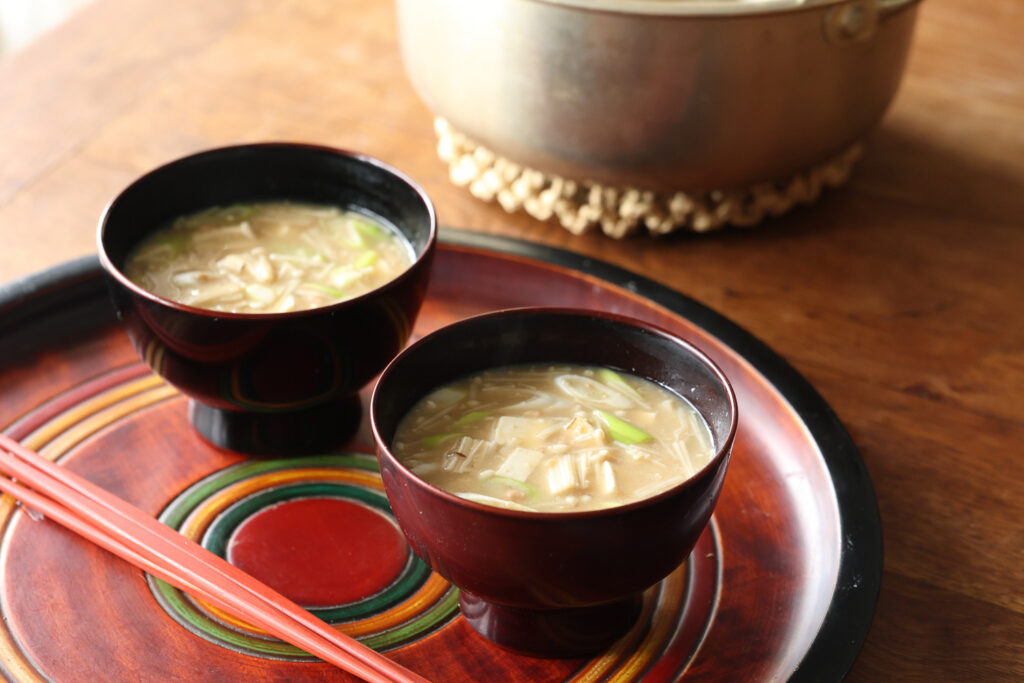
minokamo | Cookery expert / Photographer
Gifu Prefecture native minokamo’s culinary adventures were inspired by her fond childhood memories of cooking with her grandmother. She researches, writes about, and arranges regional dishes that capture, through their preparation and presentation, sensory enjoyments inspired by local climate, history, and lifestyles. Ryori tabi kara tadaima(Back from a Cooking Journey; Fudosha), published in September 2020, is a collection of recipes from minokamo’s visits to homes up and down Japan.
